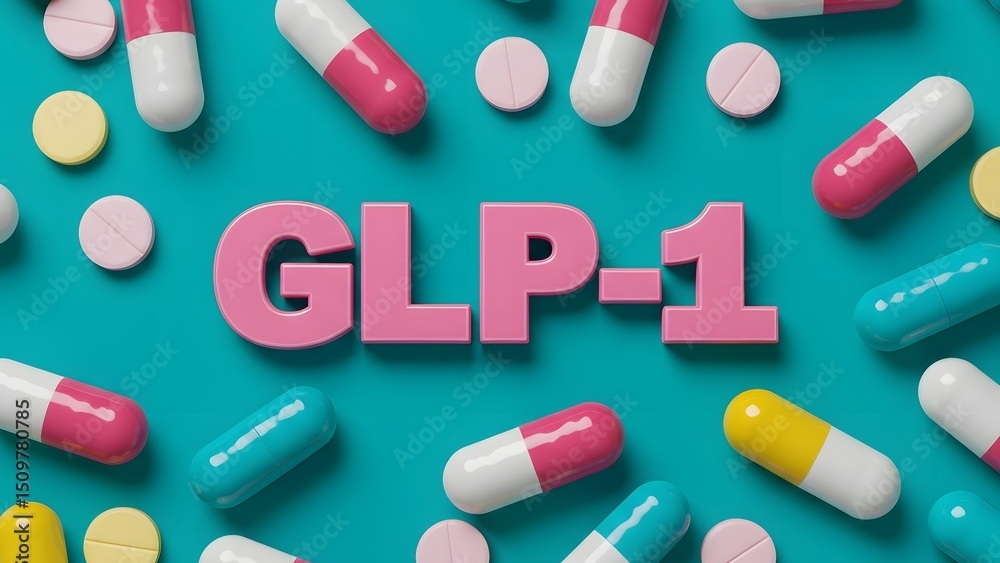
Lilly’s weight loss pill orforglipron meets primary Phase III endpoint
Eli Lilly, the US market leader in the lucrative diabetes and obesity space, is now challenging its competitor Novo Nordisk in the area of oral GLP-1 receptor agonists. Lilly’s orforglipron has met the primary endpoint of its registration study and is set to be submitted for approval in the United States.
On Tuesday, Lilly announced that orforglipron had achieved the primary endpoint of its Phase III registration study—weight loss—in individuals with diabetes and obesity. Patients taking the oral GLP-1 receptor agonist (GLP-1 RA) orforglipron at a daily dose of 36 mg experienced an average weight reduction of 11% after 72 weeks of treatment. In the placebo group, the weight loss was only 3%. According to Lilly, the weight loss observed in this hard-to-treat patient group closely matches the previously reported 12% reduction in people with obesity alone.
Although Lilly had already dented Novo Nordisk’s share price with the superior efficacy of its GLP-1/GIP RA tirzepatide compared to Novo’s GLP-1 RA semaglutide, aided by aggressive marketing and production expansion, Novo Nordisk maintains an advantage in the more convenient oral formulation. Its oral version of semaglutide is expected to receive FDA approval in Q4 2025 – giving it a lead of four months.
Building on Rybelsus, the oral GLP-1 RA approved in the US since 2019 for type 2 diabetes, Novo Nordisk achieved a median weight loss of 15% in obesity patients in its Phase III registration trial for oral semaglutide, compared with a 2.2% reduction in the placebo group. Among the subgroup of patients with both type 2 diabetes and obesity, the median weight loss was 10.5%. Meanwhile, 11% of participants in Lilly’s trial discontinued treatment early—mostly due to gastrointestinal side effects. Novo recently entered into a partnership to further optimise the bioavailability and tolerability of its oral formulation.
The reaction of Lilly’s investors remains to be seen, particularly as prior results with orforglipron failed to impress, leading Wall Street analysts to significantly revise down their revenue forecasts.
Sales of GLP-1-based weight loss therapies are projected to reach US$150bn by 2030. With a current market capitalisation of US$308.04bn, 66% lower than in 2023, Novo Nordisk has lost its former position as the most valuable European company. Eli Lilly has also declined by 17% from its peak of US$829.73bn and currently stands at US$729.58bn. Whether Novo Nordisk can recover from its recent crisis and the associated drop in market valuation—with a new CEO and the oral formulation in hand—remains uncertain, especially in light of growing competition. The comparatively lower incidence of side effects with oral semaglutide may offer a short-term advantage. However, until oral formulations are further optimised, weekly injections may remain the more favourable option.
The same challenge applies to other oral formulations such as HS-10535 from Merck/Hansoh Pharma, the weekly pill ECC5004 from AstraZeneca and Eccogene, and CT-966, which Roche acquired through the takeover of Carmot Therapeutics.
In Phase II trials, the dual GLP-1/GIP RA VK2735 achieved a 12.2% reduction in body weight compared with placebo after 13 weeks of treatment in patients with obesity and comorbidities. However, the issue of bioavailability likely also affects this peptide-hormone combination. The British biotech firm Verdiva Bio Ltd, which launched in January with a record-breaking Series A funding round, may face similar challenges with its oral amylin (IND stage) and GLP-1 RA (Phase II) candidates.
Structure Therapeutics Inc, on the other hand, may be well positioned with its development of GSBR-1290, an oral non-peptidic GLP-1 RA. Results from a Phase IIb trial are expected in Q4 2025.


 IQVIA
IQVIA
 Momoneymoproblemz - wikimedia
Momoneymoproblemz - wikimedia